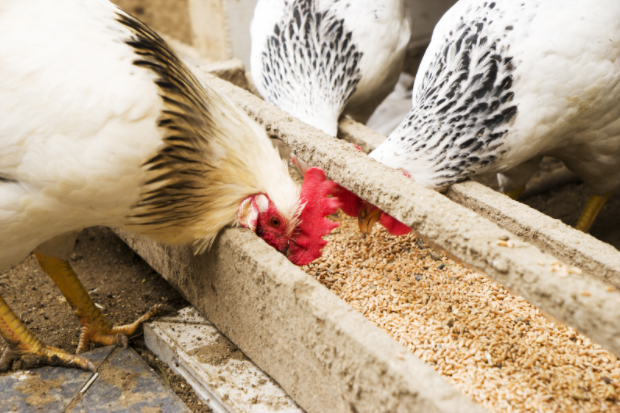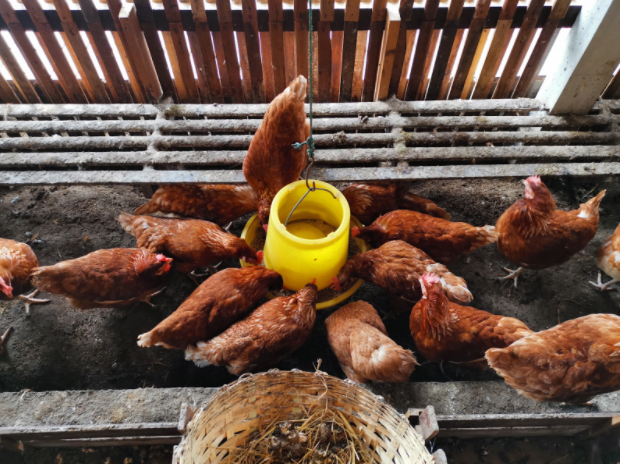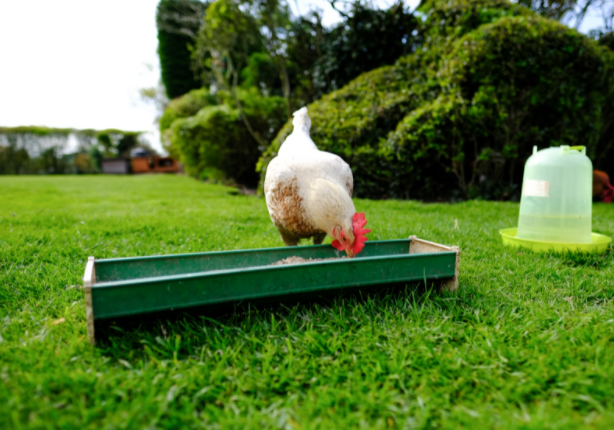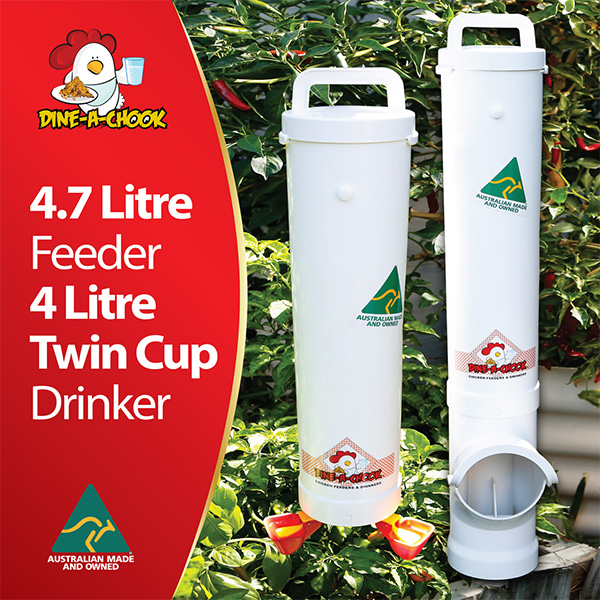Chicken Basics : Chicken Feeders

Can you guess your chicken’s favourite activity? Chickens just love to eat! They spend the greater part of each day foraging and eating their newly uncovered snacks.
It is always better to have a free-range option for your chooks where and if possible. Free-range gives them access to some healthy natural snacks like grubs. They do, of course, still need their daily chicken feed as well.
To the untrained eye, chicken feeders may just look like a bowl full of chicken food, but this is simply not true! Choosing the correct chicken feeder is another very important decision you will have to make on your flock’s behalf. To help you out, we’ve put together a guide with all you need to know to get the best feeder for your flock.
What Is A Chicken Feeder
A chicken feeder is essentially a container to hold food for your chickens. Sounds very simple right? You might not want to decide so quickly.
There are a few things you need to consider before choosing a feeder for your chooks. One of the many design challenges a feeder faces is resisting your cheeky chook’s antics without being knocked over.
Chooks explore the world by pecking, scratching and attacking objects in their vicinity, this includes the chicken feeder, waterer and any other object around. You want a feeder that is easy for your chooks to access, but difficult to tip over.
Feeders also need to ideally be weatherproof, pest-proof and promote cleanliness. Some chickens will try to get into the feeder and defecate in the food. Weather and pest proofing will save you a lot of money on food by reducing waste and losses.
Making A DIY Chicken Feeder
Some DIY loving chicken owners often try to make their own chicken feeders. These chicken feeders often turn out beautiful and creative, but will they withstand your flocks flipping professional techniques?
The main goal of a chicken feeder is to resist being tipped over, defecated in or exposing the feed to weather conditions all while still being easy to access. This balancing act can be quite tricky. If you’re an old-timer then, by all means, go ahead and make your own, but if you’re new to chicken keeping we advise you to buy first and build later so you can get an idea of what is needed.
Chicken Feeders Everywhere!
There is no clear formula to work out how many chicken feeders you will need to sufficiently feed your flock. You will have to take into account the size, age and breed of your flock to make the right choice.
Some chicken experts suggest that 5 cm of chicken feeder space per chook over the age of 6 weeks is ideal. Others suggest getting a few medium-sized feeders for large flocks to place all over the coop and run.
Shy birds won’t get to eat if a feeder is too crowded and you might end up with some underfed birds so spreading out the feed between a few feeders works in everyone’s favour. It is best to observe your chooks at feeding time to make sure all your birds are getting enough food. If you see some competition, don’t hesitate to introduce more feeders into the coop.
Different Types Of Chicken Feeders
There are quite a number of chicken feeders to choose from. If you just noticed, you might feel a little overwhelmed. So, how exactly do you choose the best chicken feeder for your flock?
All chicken feeders have the same objectives – to provide easily accessible food while preventing spillage, waste and environmental damage. Different types of chicken feeders do, however, go about achieving their goals in very different ways. Let’s look at some chicken feeders and how they benefit your flock.
- Suspended chicken feeder

One of the most popular feeder types is the suspended feeder. Suspended feeders are usually hung from the roof at about the height of the chicken’s neck so they can still easily reach inside.
This is done to prevent chooks from scratching out the food or scratching other debris into the feeder. It also keeps pests like ants out of the feeder. With this type of feeder, a plastic or rubber tray is better since metal tends to rust over time.
- Treadle chicken feeder
The treadle chicken feeder is a heavy feeding box with a platform that the chicken can stand on to feed. When the chickens get on the platform it opens the lid on the feed and when they get off it closes again. This mechanism keeps out any unwanted pests like rats and protects the food against the elements.
Chickens might have a little trouble figuring out how the feeder works, but once they get it, it won’t be a problem anymore. Keep an eye on them to make sure all your girls get to eat something while they learn. This is the best feeder for saving money over time.
- PVC chicken feeder
The PVC feeder, also known as a tubular feeder, is a chicken feeder constructed out of new or used piping or plumbing. This type of feeder is quite large running along a wall of the coop with upturned ends to prevent feed from spilling out.
It prevents chickens from scratching out the feed. This feeder can hold a lot of food for a big flock, but it’s not the best at keeping pests at bay. This is however one of the simplest and widely available feeders out there.
The Best Location For Chicken Feeders

Now that you’ve decided on a feeder, it is time to put your feeder out for the chickens. Keeping your feeder in an enclosed space will save you a lot of money in the long run. Rain, wind and other weather conditions won’t be a problem if you keep your feeder undercover.
The best place for a feeder is inside the coop, close to the door. Doing this will keep your feed safe and dry and also encourage your chickens inside at night. It is better to have a bigger coop so you have loads of space on the inside to place your chicken feeders.
Now you know the basics of chicken feeders so try to keep all you’ve learned in mind when buying or making a feeder for your chooks. There is a lot of thought that goes into a chicken feeder so don’t use just any old bowl when feeding chickens in the long run. A superior quality feeder will save you loads of money and keep those pesky rats away!



